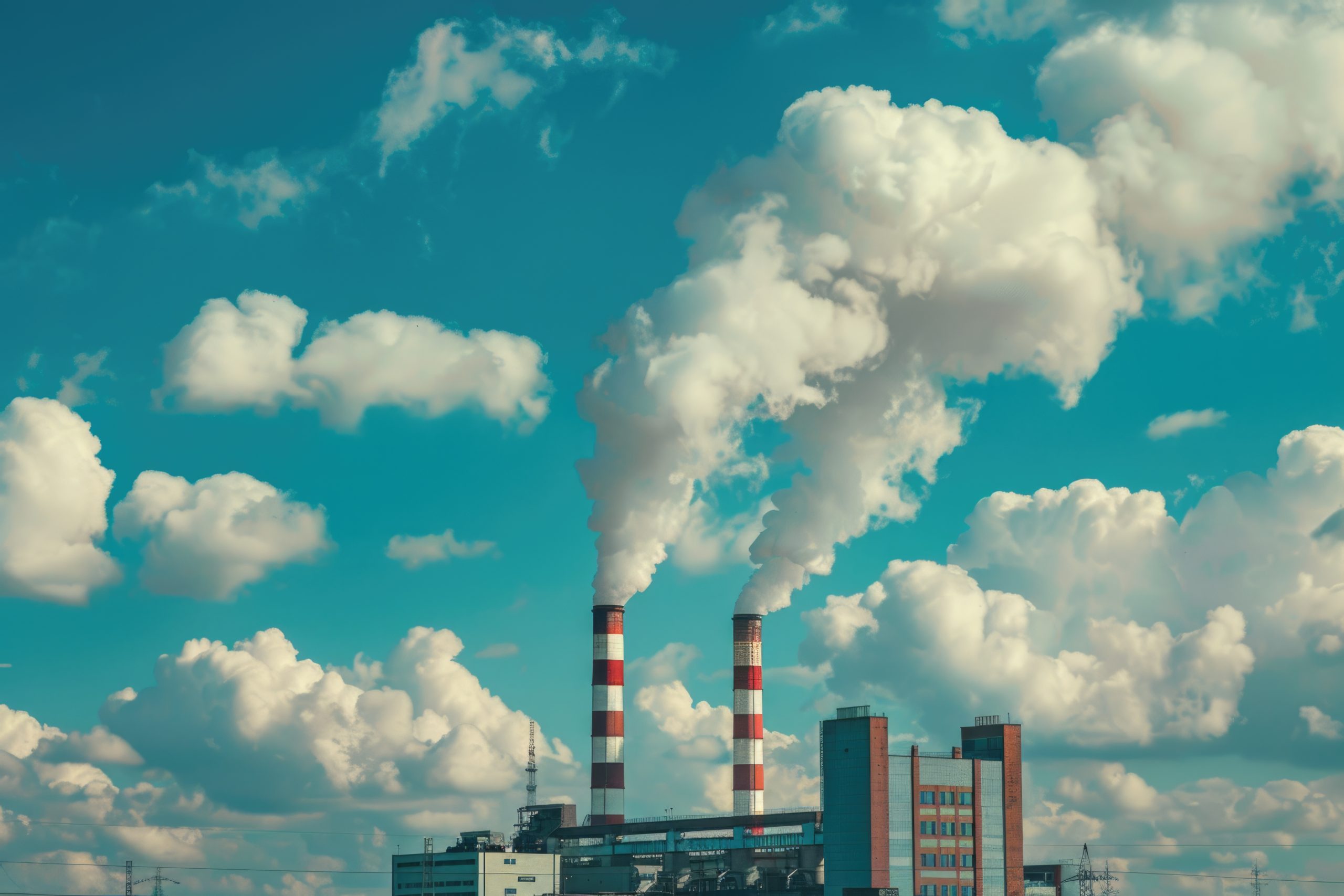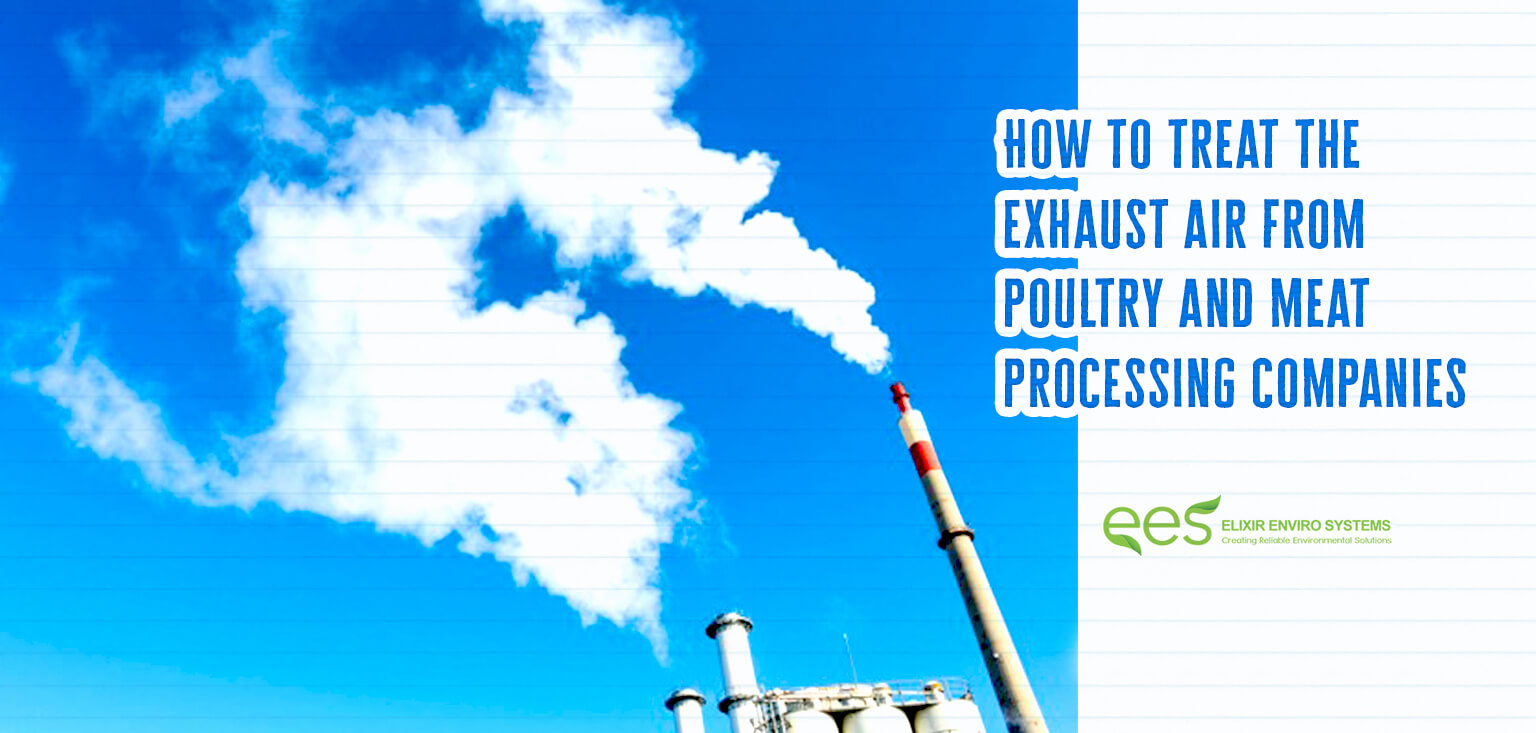
Industries like poultry and meat processing companies causes odour nuisance to the neighborhood. There have been several technologies to tackle this situation. The requirement of an exhaust air treatment system is determined on the basis of the size of the facility, the specific processing operations involved, the exhaust air volume, and pollutant load to be treated, and the resulting nuisance potential. Elixir enviro Systems Pvt Ltd (www.elixirenviro.in) is a pioneer in odour control. Elixir Enviro Systems Pvt Ltd designs the required upstream and downstream processes for the effective odour control strategy. The strategies include appropriate ventilation design and pretreatment steps for the optimal operation of the Odour Control Unit(OCU).

What kind of exhaust air treatment system should be used in a slaughterhouse? It could vary for different facilities and is purely decided on case-by-case basis. Here are the commonly used exhaust air treatment systems for slaughterhouses:
Biological elimination of pollutants from air is the most environmental-friendly technique since it ensures minimal use of chemical agents and in many cases, it comes as the lowest lifetime cost alternative compared with other treatment technologies. In biological exhaust air treatment, microorganisms are used to convert odour components to CO2 and H2O.
Bioscrubbers are also called Bio-washers. In the Bioscrubber, absorption of air pollutants and the reaction or degradation of the pollutants occurs in two reactors. In the first stage the air is being washed or gets in contact with the air having the pollutant load and the absorbent or the liquid absorbs the pollutant from the air. In the second stage, this absorbent is treated biologically and circulated back to the washing stage. If you look in general, the Bioscrubbers are mainly employed for highly soluble and low volatile compound treatment.
The contaminated air is passed through the packing media made of inert materials. In these filters, a liquid phase is trickled into the media. The pre-humidification can be avoided in the bio-trickling filters as the water phase can provide the moisture for the biomass activity. In Bio-Trickling filters inert materials with chemical stability, low weight and good mechanical properties are preferred. These filters are well aerated systems and the microorganism responsible for the degradation are usually aerobic but deeper into the bed, there is also anaerobic degradation. The flip side of this process is the requirement of micro and macro-nutrient supplementation to assure that the microorganisms are getting enough nutrients for the growth. If this nutrient supplementation is not properly regulated, this can lead to clogging of the unit.
What is biofilter? It is basically a porous layer made up of organic material. It supports the microbial population. The odorous air is forced into the porous layer where the biological degradation takes place. Odor emission is controlled to over 95 percent with biofilters. It should be noted that media moisture content affects the functioning of biofilters. The biofiltration technology is an entrenched odour pollution control technology in various parts of the world.
The solubility behaviour of contents determines the absorption of gas in liquid. In absorption too, the efficiency is determined by adjusting the pH to acidic or alkaline. Hence the absorbers function as chemical scrubbers.
Rather than limiting to one technique, usage of a combination of techniques has proven to be more efficient in slaughterhouse facilities. For example, combination of chemical and biological processes is mostly practiced.
Odor emission is an important measure that should be taken by slaughterhouse or meat and poultry processing facilities for the well-being of humans and environment. Elixir Enviro Systems Pvt Ltd is a pioneer in the field of odour control from such industries. Different kinds of cost-effective and highly efficient odor control systems are designed and implemented by the company all over India.




